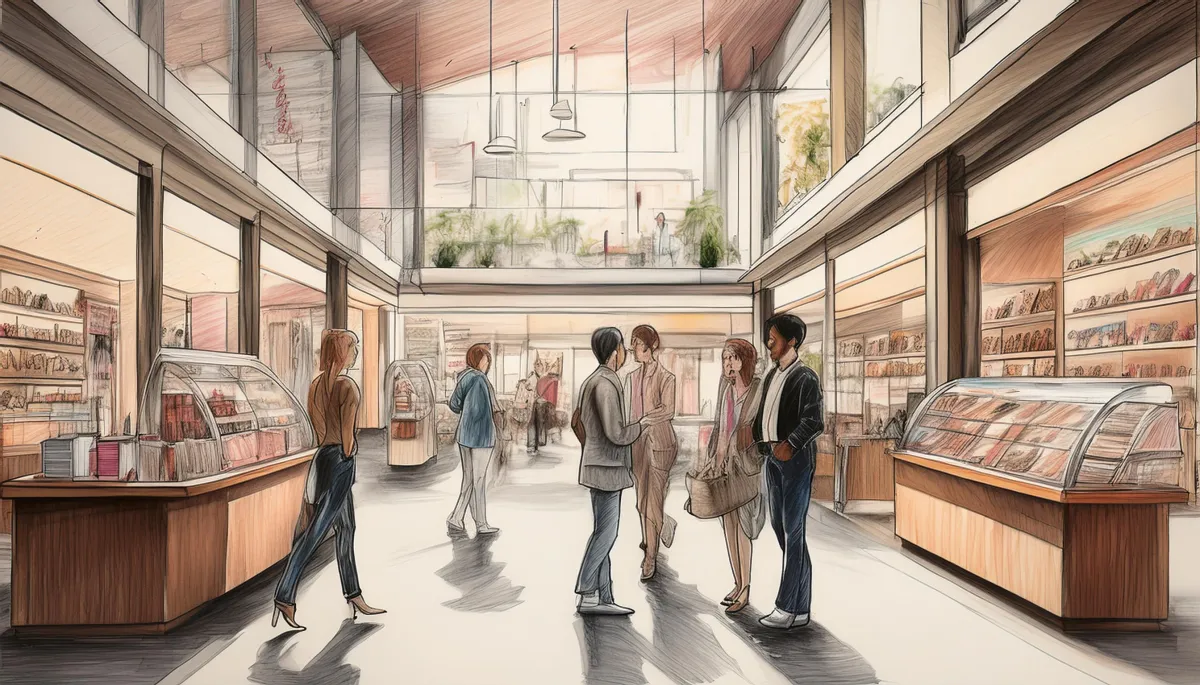
The Return of Human Spaces: Why Connection Is the New Competitive Edge
The Loneliness Paradox
After years of digital acceleration, something unexpected is happening in retail. People are showing up in person again. Not because they have to, but because they want to.
Online convenience remains unmatched, but convenience has stopped being the full story. The isolation of hyper-efficiency has caught up. People are craving places that feel alive. Stores, cafes, and entertainment venues are quietly becoming the new town squares—places to reconnect in a disconnected world.
In 2025, the most valuable currency for brands isn’t time or data. It’s belonging.
From Transactions to Encounters
The traditional store was built around efficiency: move people through, close the sale, repeat. Now, retailers are rethinking what their physical spaces are for. The best ones don’t just sell—they host.
Consider bookstores that double as creative studios, tech stores that offer free learning sessions, or clothing retailers that turn fitting rooms into personalized style labs. These aren’t marketing gimmicks. They are responses to a deep human need for recognition.
Customers are no longer impressed by speed alone. They want to feel seen.
The New Role of Experience
Experience used to mean spectacle. Pop-ups, interactive screens, and Instagram moments. But the trend has evolved. The future of experience design is emotional, not sensory.
Brands are rediscovering that small, human touches create more loyalty than large digital displays ever could. A knowledgeable associate who remembers a customer’s name. A playlist that matches the time of day. A scent that lingers softly instead of shouting for attention.
The modern experience is about creating a rhythm customers want to return to.

Why This Matters Beyond Retail
This shift isn’t limited to stores. The same craving for connection runs through entertainment, hospitality, and even digital platforms. Online communities thrive when they feel real. Hybrid workplaces work best when people feel seen, not managed.
Every industry is learning the same lesson: technology can amplify relationships, but it cannot replace them.
For business leaders, that means balancing automation with presence. It means designing systems that give teams space to engage, not just execute.
Designing for Belonging
The most effective retail and brand environments in 2025 are built around three principles:
Intention over impact. Every element of a space—lighting, music, layout—serves a clear emotional purpose.
Participation over performance. Customers aren’t passive observers. They contribute, test, and co-create.
Familiarity over novelty. The goal isn’t to surprise constantly, but to create comfort that builds trust.
This approach requires slowing down, asking better questions, and understanding what people actually miss in a digitized world.
The Hidden ROI of Connection
Connection doesn’t appear in quarterly metrics right away. But it pays off in retention, advocacy, and long-term relevance. When people feel emotionally grounded in a brand, they forgive small mistakes. They talk about it more. They return because it feels good to be there.
Companies that invest in connection aren’t being sentimental. They are preparing for a future where emotional intelligence drives economic resilience.
In a crowded market, warmth has become a differentiator.
Relearning How to Be Present
The next evolution of retail isn’t about reinventing stores. It’s about rehumanizing them. That same principle applies to leadership and marketing. Whether you’re shaping a campaign or a corporate strategy, presence matters.
The brands that thrive in 2025 will be the ones that know how to make people pause—not just purchase. Because when customers feel connected, they don’t just buy. They belong.

